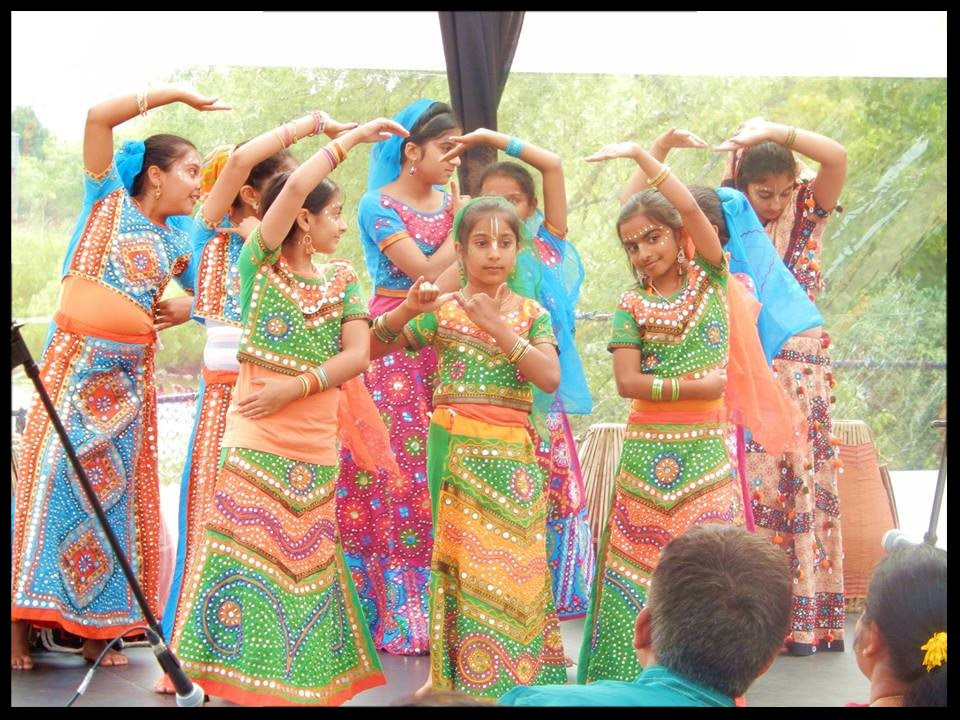
Diary of a Traveling Preacher
Volume 8, Chapter 4
March 16 – April 16, 2007
By Indradyumna Swami
As a devotee grows older, he becomes more and more aware, by the grace of the Lord, that his life is coming to a close and his time to achieve perfection in Krsna consciousness is running out.
Sometimes the signs come in disconcerting ways. A few months ago several of my disciples approached me and asked if I would tell the history of each of the salagram silas on my altar.
“Perhaps another day,” I replied.
“But Guru Maharaja,” said a woman disciple, “you’re the only one who knows the unique story behind each sila. And you’re getting older … ”
She didn’t finish the sentence. There was no need. Old age implies that things are winding down and coming to an end.
Another sign is the gradual departure of friends and loved ones as we cross the threshold of 50 years, the beginning of old age according to Vedic culture. With the passage of time their departures are more frequent and less surprising. Jayadvaita Maharaja has written:
“That’s how it is. You watch your friends go, one by one. Then those who are left watch you go.”
Of course, as devotees we have been studying and discussing these facts of life since the day we joined the movement. But somehow, they take on a different perspective as our own bodies age.
If we are prepared to leave, as we should be, we have nothing to fear. Krsna assures us in Bhagavad-gita:
dehi nityam avadhyo yam dehe sarvasya bharata tasmat sarvani bhutani na tvam socitum arhasi
“O descendent of Bharata, he who dwells in the body can never be slain. Therefore you need not grieve for any living being.”
[Bhagavad-gita 2.30]
But the difference between theoretical knowledge and realization is vast. In order to bridge that gap the Lord sometimes accelerates a devotee’s progress by putting him through an ordeal, causing the devotee to become more serious in his spiritual life. By the Lord’s grace, I had such an experience upon my return to Durban, South Africa, at the beginning of April.
I had been complaining of pains in my upper back for some time, so a doctor and devotee friend of mine, Sunil Mohan das, had arranged an appointment for me with an osteopath. As I sat patiently on the examination table, the doctor ran his hand down my spine from behind. Suddenly, he stopped and gasped.
“Sunil,” he said, trying to mask his concern with a calm voice, “please come here.”
Sunil went around the table, and the two of them spoke quietly, but their hushed conversation let me know that there was a problem.
“Did you find something?” I finally said.
“Maybe,” Sunil replied. They then stepped into the next room.
As I strained to hear their conversation, I suddenly heard the word “melanoma.”
I broke into a cold sweat. I knew that melanoma is one of the most dangerous and aggressive forms of skin cancer. Last year my Godbrother, HH Bhakti Tirtha Maharaja, passed away from it. If caught in the initial stages it can be cured, but if left undetected it leaves little chance for survival.
“Excuse me doctors,” I said loudly, “did I hear you say melanoma?”
There was silence for a moment, and then Sunil came back into the room. “Yes, Maharaja,” he said. “There’s a dark, raised mole on your back with irregular borders. It’s not a good sign. But don’t worry. We can’t conclude anything until we send it in for a lab test.”
In the next room I could hear the osteopath talking on the phone to a dermatologist. “Come quickly,” he said. “It looks serious.”
In five minutes the specialist arrived. “It’s here,” said the osteopath as he showed the dermatologist the mole.
“Yes, I see,” said the dermatologist in a grave voice. He then injected me with a local anesthetic and removed the mole. He finished the job with four stitches and then held up the mole for the others to see.
All three remained silent. My apprehension increased.
“Let’s not come to any conclusions until we have the lab results,” Sunil said. “It may well turn out to be benign.”
“And if not?” I asked.
He paused. “In that case we’d have to begin chemotherapy or radiation immediately,” he said soberly. “But we’ll have to wait a couple days for the result. The lab is closed now and won’t open until Monday.”
On the way back to the temple I was immersed in thought. Suddenly everything in my life paled in comparison with the stark reality in front of me.
“Could this be the beginning of the end?” I thought. I was momentarily stunned.
Then I caught myself. “This is what all the training’s for,” I told myself. “It shouldn’t come as a surprise.”
But it was indeed a surprise, despite all the classes I’d heard on leaving this world and the many that I had given as well.
I continued reflecting for a long time. “Of course, we have to wait for the lab results as Sunil said,” I thought, “but because they all showed so much concern, I’d better prepare myself for the worst.”
When I arrived at the temple, some devotees were waiting to see me outside my room. I didn’t feel like meeting with anyone, so I excused myself, went into the room, and locked the door.
“I wish I’d done more for my spiritual master,” I blurted out as I sat on my bed. “There were days I wasted so much time. And why didn’t I ever go deep into my sadhana, like many of my Godbrothers?”
I picked up my beads and started chanting with determination. Then I paused. “Well,” I said to myself, “are you finally going to start chanting with resolve?”
I looked down. “And?” I said softly. “And where will I go if I die? Back to Godhead?”
I glanced at my Radha-Krsna Deities on the altar. I got off the bed and sat in front of them.
“My Lord,” I prayed, “if it turns out I have a terminal disease and I have to take birth again, please let it be in the home of your devotee. And bless me that I can continue on the path of strict renunciation while always engaged in your loving service.”
Suddenly there was a knock on the door. It was Swarup Damodar, president of the Durban temple. He asked me if I wanted something to eat, but I had no appetite.
That night I tossed and turned. At one point I woke up thinking I had dreamed the events of the previous day. Then I realized it wasn’t a dream. I could not go back to sleep, so I got up and decided I would begin preparing a letter for my disciples and friends.
But first I wanted to write a letter to the GBC asking permission to accept initiation as a babaji and retire to Vrindavan to leave my body. It was not unprecedented. In 1975, Srila Prabhupada gave babaji initiation to my Godbrother, Audolomi das, who had been diagnosed with a terminal illness.
I also wanted to leave this world with no material possessions or designations. In this age the order of sannyasa involves dovetailing much of the material energy in preaching. It also carries with it prestige and honor. Although these assets are useful for service, they always pose a danger for a transcendentalist. When I die, I want to live out the last few months with nothing but the holy name. A babaji owns only the bare necessities of life, and his final service is chanting the holy names.
As Srila Prabhupada said at Audolomi’s babaji initiation:
“Sannyasa has got four stages: kuticaka, bahudaka, parivrajakacarya and paramahamsa. Parivrajakacarya, he travels all over the world. And after that, when he is fully mature, he can chant in one place Hare Krsna. He has no more business. So this is the last stage of mature sannyasa. But because you are thinking that you may not live many years, so you simply sit down, go to Mayapur. You have no other business. Simply go on chanting Hare Krsna mantra, and whatever little prasadam available, you take. And the rest of your life, simply engage in chanting. [Your name is] Audolomi das Babaji … so this is the first time in our institution: a babaji.”
[Lecture, Chicago, July 11, 1975]
After a few paragraphs, I decided to stop writing until Monday, when it would be confirmed whether I had melanoma or not. To continue with the letters would seem like a confirmation of the disease.
The next day I kept myself busy. I found that if I was idle even for a moment, my mind became disturbed speculating on the laboratory results.
That night, I again tossed and turned in my sleep. At 1:00 AM I got up and started chanting japa.
“This is what brought me to Krsna consciousness,” I thought. “This is what has maintained me all these years, and this is what will deliver me.”
I thought about my instructions to my disciple Vraja Lila dasi in Vrindavan as she gradually succumbed to leukemia. “Get into the fast lane,” I told her. Those words now echoed in my mind.
Sunday morning I kept busy again, but towards midday I called Sunil Mohan.
“Sunil,” I said, “I know the lab doesn’t open until tomorrow, but is there any way we can get the test done earlier? It’s very difficult waiting like this.”
He paused for a moment. “Let me see, Maharaja,” he said. “I’ll get right back to you.”
Ten minutes later he called back. “Okay, Maharaja,” he said. “I’ve asked one of the girls from the lab to go in and work on it. We’ll have the results by this afternoon.”
“Thank you,” I said.
In the afternoon I went for a walk in a local park, once again pondering the prospect of death.
“But what if the results show I don’t have the disease?” I suddenly thought, allowing a glimmer of hope I hadn’t considered. I stopped walking.
“If that were the case,” I said to myself, “I would wake up every day grateful for another chance to serve my spiritual master, Srila Prabhupada. And I’d redouble my efforts to assist him in spreading the glories of the holy names all over the world.
“And I’d take advantage of every spare moment to go deeper into chanting the holy names myself. And I’d read more. Every day, I’d drink the nectar of the Bhagavatam, and all the books left by our previous acaryas.”
I paused. “And I’d also try to become a lover of Krsna before I die,” I said.
Then I remembered the doctors’ reaction upon discovering the mole. “Better not get my hopes too high,” I concluded with a touch of hopelessness.
I continued walking. Fifteen minutes later my cell phone rang. From the number on the screen I could see it was Sunil Mohan. I hesitated to answer. Whatever was the report, I knew my life would never be the same again.
I let the phone ring a few more times, and then I answered.
“Hello, Maharaja, this is Sunil Mohan.”
“Hare Krsna, Sunil.”
“Maharaja, I have results of the lab test on that mole,” he said.
Then there was a long pause. Resigning myself to the worst, I took a deep breath and waited.
“Excuse me,” he said, “I just dropped the paper and had to pick it up. Maharaja, it’s okay. There’s no melanoma. It was just an ordinary mole that somehow became agitated. There’s no problem whatsoever.”
I was speechless.
“Hello?” Sunil said. “Maharaja, did you hear what I said?”
“Yes, I did,” I said. “Thank you.”
“I’m sorry if we caused you any worry,” he continued, “but we couldn’t take any chances.”
“Yes,” I said, “I understand. You did the right thing.”
“Okay, Maharaja. See you tomorrow.”
“Hare Krsna,” I said.
I put my cell phone in my pocket and went to sit under a tree. I joined my palms and began to pray. “Thank you, Lord,” I said. “Thank you for giving me a second chance.”
I shook my head. “It’s amazing,” I continued. “There was never any real danger at all. Yet somehow I feel that You’ve given me another chance.”
I looked up. “Sometimes it’s hard to understand Your plan,” I said.
I reflected for a moment. “My Lord,” I said, “I know that one day a lab report will come back with news of my demise or that one day a fatal accident will befall me. Therefore, I beg You, help me remember all the valuable lessons I’ve learned during the past two days.”
When I arrived back at the temple, the devotees were lined up waiting to see me.
“It’s nice to see you happy, Maharaja,” a devotee remarked. “You looked a little down the past couple of days.”
“Did I?” I said. “Well I’m all right now.”
“How’s that?” he asked.
“I got a second chance,” I replied with a smile.
Srila Prabhupada said:
“So those who have taken to Krsna consciousness, it is a chance. You had previously some advantage of executing this Krsna consciousness. Somehow or other, you could not. So Krsna has given another chance. Don’t miss this chance. Make it complete. Make it complete and go to Vaikuntha or Krsnaloka. We should always pray to Krsna that, ‘Krsna, You have given this chance. Please have your grace upon me [so] I may not miss it. By maya’s influence I may not miss it. You have given me so great chance.’ This should be our business.”
[Lecture, Tokyo, April 27, 1972]
indradyumna.swami@pamho.net www.traveling-preacher.com Official website for Diary of a Traveling Preacher


 Sunday School
Sunday School















 By Subhangi Devi Dasi
By Subhangi Devi Dasi
 By Satyaraja Dasa
By Satyaraja Dasa











